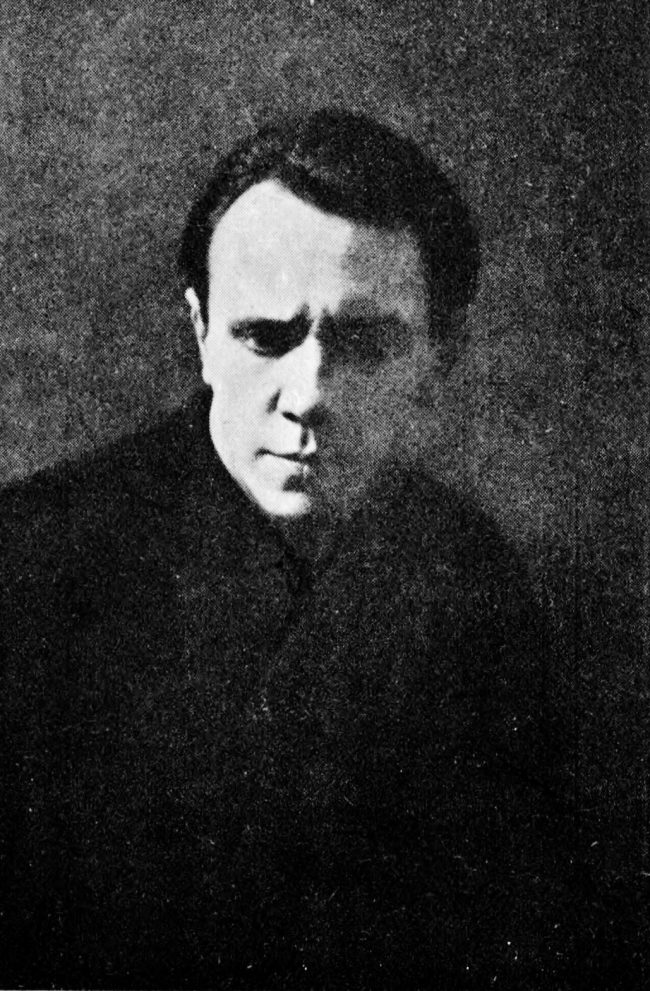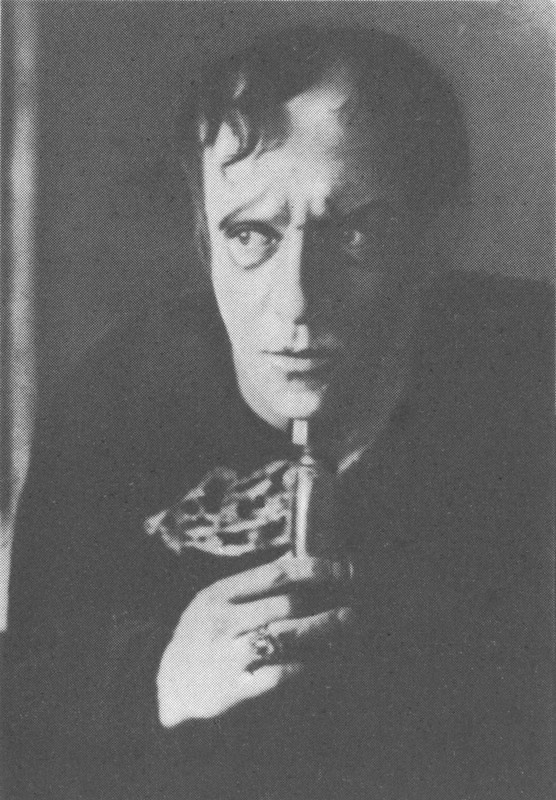Michael Chekhov: A Crash Course in Psycho-Physical Acting
Kevan Dunkelberg | Last updated: August 05, 2023
Any theatre buff who hears the name Chekhov probably thinks of the famed Russian playwright Anton. But Anton had a nephew, Michael Chekhov, who was something of a theatre aficionado himself. The younger Chekhov devised an acting methodology still being taught and used today. In fact, an increasing number of college and conservatory programs are teaching his work. Chekhov falls under a category of acting training called “psycho-physical”. So, let’s dive in and find out more about the work of Michael Chekhov and psycho-physical acting.
What Is Psycho-Physical Acting?
Despite what it sounds like, psycho-physical acting does not involve acting like a psycho. Not intentionally, anyway. Psycho-physical acting calls for the actor to marry their imagination with their physical body to create rich, dynamic characters with a believable emotional life. What exactly does that look like? Let’s start with the basics-acting is all about creating a believable character. Of course, you could ask 50 different people how to do that and get 50 different responses. There’s the Method camp, with people like Lee Strasburg and Uta Hagen, who believe that actors should rely on memories and lived experiences to conjure up the emotions of their characters. Then there’s Sanford Meisner, who felt that the Method approach was unsafe and trained actors to use their imagination to tap into emotions. You may notice that neither of these methods involves actors using their bodies. Enter Michael Chekhov. He, like other psycho-physical practitioners, believed that actors can use physicality and the movements of their body, along with a rich imagination, to drum up emotions and bring a character to life. Like Method and Meisner, Chekhov trained actors to develop a rich imagination to fully explore a character’s inner life. But while Method and Meisner techniques train actors to conjure emotions starting from the inside out, with the character’s psychology, Chekhov believed that emotions come from the outside in, with the character’s physicality.
One of the challenges actors often face is accessing emotions consistently. We’ve all had performances where we were “in the zone”--seamlessly able to tap into our feelings, and we’ve all had performances where, for whatever reason, it just wasn’t there. Chekhov felt that training actors to use their bodies and imagination would make it easier to reliably access an emotional reservoir. The more that actors stretch their imagination, the deeper that reservoir will be. So how does that work? Let’s look at just a few of Chekhov’s main ideas.

Picture It…
Chekhov crafted a series of exercises to enrich actors’ imaginations and train them to use the imagination as a vehicle for creative inspiration. For Chekhov, the imagination should be a dynamic terrain of images that take on an independent life, unrestrained by the bounds of reality or self-censoring. To accomplish this requires concentration and focus, and his exercises help develop those as well. Here’s a look at some of them:
- Start by focusing on an object that’s physically present near you and describe it to yourself. Don’t miss any detail - observe the texture, size, color, height…anything and everything. Then, try the same with a sound.
- After spending some time directing your focus on present objects and sounds, do the same for an object that you remember but that isn’t present. Concentrate on remembering as many details as you can. Then, do the same for a sound.
- Next, think about a fantastical object. It can be abstract, an otherworldly being, a landscape…anything that your imagination creates. Do the same with a fantastical sound. Concentrate on every detail that you can.
- Finally, concentrate on “grasping” each object you’ve created in your imagination. Use what Chekhov calls “invisible hands” to grasp each object as fully as possible and experience a connection to it with your entire inner being.
Chekhov trained actors to carry their concentration and focus into their work on a role. Focus for an actor translates to a more specific and imaginative performance.
The Psychological Gesture
Here’s where the “psycho” part comes in. Chekhov trained actors to develop a series of gestures that capture their character’s inner need or impulse at a given moment. He called each of these gestures the “psychological gesture”. An individual psychological gesture is an outward depiction of a character’s internal feelings, emotions, and desires. It should be fully embodied, meaning it goes beyond something like a simple pointed finger and involves as much of the body as possible. It should be specific and repeatable. Once an actor has developed their psychological gesture, they can then work with it, repeating the gesture over and over and then attaching the text. Chekhov believed that the gesture will eventually allow the actor to access the necessary inner emotional life, at which point they can then incrementally minimize the gesture until it’s fully internalized. In essence, the psychological gesture is a tool for accessing emotion through muscle memory.
To find a psychological gesture, ask as many questions as possible about your character. What do they want? What do they fear? Who do they trust? The more questions you ask, the more creative fuel you’ll have to work with as you play around with a psychological gesture. Maybe your character wants to comfort. Think about what it means to comfort - maybe it’s an embrace. Then you can start to shape your gesture - is it a gentle embrace? An urgent embrace? Does the impulse to embrace start from somewhere specific in the body?

Radiation Zone
One of the major components of Chekhov’s work is what he called “radiating”. In short, radiating means sending out, or radiating, the essence of whatever your character has going on inside. It might be an emotion or some quality like fragility or courage. When you radiate, you’re taking what’s inside of you and sending it out to others as invisible energy. In turn, that energy can be received. Radiating is a form of communicating, and can happen between actor and actor or actor and audience. Have you ever known someone who exuded a certain quality, maybe so much so that they seemed to fill the room with it? That person was radiating. Chekhov described radiating as making the intangible part of a role the most tangible part of an actor’s performance. To illustrate, think about Juliet’s famous monologue in Romeo and Juliet’s balcony scene, where Juliet laments “Wherefore art thou Romeo?” and entreats him to “deny thy father and refuse thy name”. Radiating can help the actor go beyond the simple meaning of the text and convey Juliet’s rich inner emotional life fueling her words.
The Atmosphere
Atmosphere as Chekhov defined it is the dominant mood or tone that fills the theatre space. It’s created by the actors, both individually and collectively. To illustrate the idea of atmosphere, imagine walking into an old abandoned building at night. Walking into that space will probably provoke some feelings in you - it might be fear, unease, wonder, curiosity, or something else. Those feelings are stirred by the building’s atmosphere. Actors create atmosphere by radiating elements of the play that can’t otherwise be communicated. It’s a form of communication between actors and between actors and audience.
As an example, let’s go back to Romeo and Juliet. In the balcony scene, Romeo and Juliet need to radiate an atmosphere of love. Chekhov believed that imagining a chosen atmosphere is easy, but sustaining that atmosphere and using it as creative fuel requires practice. Chekhov work trains actors to develop and sustain atmosphere with an exercise where the actor imagines a chosen atmosphere and then allows that atmosphere to gradually penetrate and provoke their emotions more potently. Then, the actor begins to move and speak, aiming to work in harmony with the atmosphere and letting their movement and words strengthen it. The actor can then radiate the atmosphere outwardly, creating what Chekhov called the “heartbeat of every piece of art” and the “lifeblood of each performance”.
This is only a broad glimpse into Michael Chekhov’s work. Of course, if you’re more of an analytical, practically-minded thinker like me, all of this can sound very…strange. It did for me when I first started doing Chekhov work, and in some ways still does. Chekhov and psycho-physical work, like any other acting method, is one tool in the toolbox. Some actors love it, others don’t.
Be sure to check out our guide on Michael Chekhov to learn more about his life and work. If you want to read more about Chekov’s techniques, his book, On the Technique of Acting, is a great resource. If you’re looking for more of a crash course, To the Actor is a condensed version of his original manuscript. You can also find resources through the Michael Chekhov Association and in this video.
Last Updated: August 05, 2023

Kevan Dunkelberg
Oklahoma-based drama teacher, actor and playwright